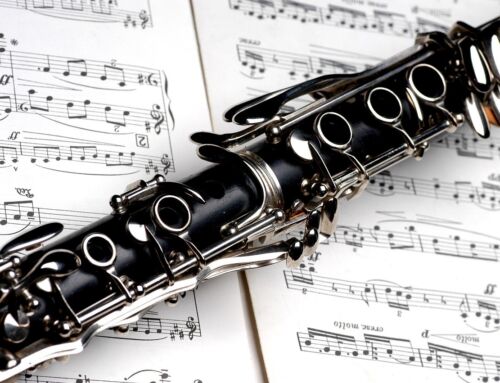Have you ever found yourself so transfixed by the beauty of something that you become totally absorbed in it, or found yourself listening to a single piece of music over and over because it speaks so deeply to your heart and soul?
That is what happens to me each time I listen to the queen and sovereign of all Ave Marias, that of German composer, Franz Biebl (pron. Bee-bul).
The “queen and sovereign” designation is my own, but I believe the title is justified. It is also a tall order when you think of the magnificent Ave Marias of Schubert, Bach/Gounod, and Caccini. (You would recognize each of them even if you didn’t know the composer). These classics vie with each other for the prize of unsurpassed Marian beauty.
Franz Biebl’s Ave Maria, however, is the greatest of them all due to its sheer artistry, its rich chord structure, and its ability to evoke raw emotion from the depth of one’s being. The other compositions were written for solo voices. Biebel’s is an amazing eight-part harmony.
Prisoner of war
I became familiar with this Ave Maria when I sang in a chorus in college (oh, a hundred years ago), and it still tops my list of favorite compositions. I’m sure you’ll see why, once you listen to it. However, I didn’t realize that the composer had such an interesting history, unexpected, in a way, for someone who produced such a masterpiece.
Franz Biebl, born in 1906, had been a soldier in Hitler’s army. He was taken prisoner of war in 1944 and kept in a military prison in Michigan from 1944-46.
There he was introduced to American culture and the humaneness of the American ethic of incarceration. He once commented how surprised he was that his wardens actually fed the prisoners enough food to survive! He developed a great respect for America as a result of that experience. A mutual prisoner exchange following the war’s end sent him back to his native Germany where he took up his original profession of teaching, writing, directing, and performing choral music.
Two decades later, when he composed his famous Ave Maria (1964), it received little attention in Germany, so he invited American choirs to sing his music on German radio. These performances popularized the piece in his homeland and then the choirs brought it to America where it has become a favorite of religious choirs, although it is still barely known by the general public to this day
In God’s Kingdom, anything is possible. What is astounding to me is that such a lofty blessing came out of an enemy soldier who was locked up in a prison in Michigan. Okay, that’s a bit dramatic, but it is interesting to see how something so beautiful emerged from the chaos of a world war.
Biebl died in 2001 at the ripe old age of 95. He wrote over 2000 pieces of music in his life, which few remember, but his one supreme masterpiece to Our Lady lives on.
The performance(s)
Biebl’s Ave Maria was originally written for a chorus of seven male voices and later adapted for the full Soprano-Alto-Tenor-Bass (SATB) choruses, but I have chosen to present the mixed chorus version first as it is utterly ravishing. The male chorus version is a close second and slightly longer. Either way, you are in for a treat. First video, duration, 4:08;. Second video, duration, 6:27.
What to look for
Performed a cappella
This Italian phrase designates music that is sung by human voices alone, without any instrumentation. The human voice is the instrument. The phrase a cappella, means “at/in a chapel”, which will become relevant with the next observation.
Antiphonal singing
The “antiphonal” style of religious music reflects the way in which monastic communities pray the psalms to this day. They do so as a rhythmic cadence of chanted verses in a back-and-forth exchange across a chapel, like the Seraphim calling to each other in the sanctuary of Heaven (Isaiah 6). In the background of the SATB video there are rows of seats on either side of the chapel where they are performing. That setting was deliberately chosen for a piece like this.
Biebl’s creation is even smoother than the simple back-and-forth chanting of monks. It is a seamless integration of high and low voices echoing verses, phrase by phrase, playing off each other with adaptations and flourishes that bring out the unique beauty and character of each voice register. Throughout the course of the performance, the listener feels as though he is in a gently rocking boat, swept up as in a mighty river of harmony.
Based on prayer
Anyone familiar with the words of the Ave Maria will know that it is the Latin version of the Hail Mary prayer. This version is punctuated at intervals by three verses of the other famous Marian prayer, the Angelus (sometimes called by its original title “Angelus Domini” – The Angel of the Lord). The verses are sung by bass and tenor soloists in the male chorus version. The SATB version leaves out two verses, which is why it is the shorter of the two.
Jesus is the center
In the Catholic heart, devotion to Mary never distracts from Jesus. As evidence, the sacred Name of Jesus lies at the absolute heart of the Hail Mary prayer. So also in Biebl’s Ave Maria. The second video displays the written music on screen, which will help you notice the many crescendos (i.e., surges in intensity, symbolized by the < signs above the score) that Biebl worked into the music to highlight certain aspects of the prayer. The most important crescendo occurs at the sacred Name of Jesus, which is highlighted twice at the repetition of the phrase, “the fruit of thy womb, Jesus.”
The great and final crescendo
Speaking of crescendos, Biebl’s Ave Maria ends gloriously in what has been described as the “Amen of Amen’s” – that designation will become apparent to you when you hear it. The final nine measures of the piece begin with the lowest note of the entire score (a low “C” on the bass register). From there the flow of music gradually winds its way up through the male registers (bass/baritone and tenor), then through the female registers (alto and soprano) – crescendoing and echoing the entire way – to a rousing climactic unison of voices culminating in the highest note of the piece, the high “C”, two octaves above where the bass voices began.
It will put you on the edge of your seat.
More importantly, the voices during the entire nine measures pronounce only one word: Amen. And don’t miss the perfectly-executed and sustained “N” at the end of Amen (especially in the male chorus version), which sweetens the entire experience like icing on the cake.
There is great competition in the world of Ave Maria’s, but Biebl’s masterpiece is the queen and sovereign of them all. After listening to it, I’m sure you’ll agree.
Lyrics
Angelus Domini nuntiavit Mariae / Et concepit de Spiritu Sancto.
Ave Maria, gratia plena, Dominus tecum. / Benedicta tu in mulieribus / Et benedictus fructus ventris tui, Jesus.
[All-male chorus only] Maria dixit: Ecce ancilla Domini. / Fiat mihi secundum verbum tuum.
Ave Maria, gratia plena, Dominus tecum. / Benedicta tu in mulieribus / Et benedictus fructus ventris tui, Jesus.
[All-male chorus only] Et verbum caro factum est / Et habitavit in nobis.
Sancta Maria, mater Dei, / Ora pro nobis peccatoribus. / Sancta Maria, ora pro nobis / Nunc et in hora mortis nostrae.
AMEN.

Soul Work
In no Catholic devotion, except for the adoration of the Most Holy Eucharist, do we find a swifter and surer path to Jesus than through Mary. St. Louis Marie de Montfort said that “it is easier to separate light from the sun than to separate Mary from Jesus.” There is something truly astounding about that observation.
Do you have devotion to Our Lady? Is your devotion active or passive? Is the Blessed Virgin a companion on your journey through life or a shadowy figure on the margins of your religious practice? Remember that the inspired Word of God has placed on Mary’s lips the words: “All generations shall call me blessed” (Luke 1:48).
If you did nothing but listen to Biebl’s Ave Maria every so often, you would come away with a tender love of Mary to nurture your soul and strengthen your love of Christ Jesus. She is also the one who said to an angel: “Let it be done to me according to your word” (Luke 1: 38).
Allow Our Lady, the beloved Mother of Jesus, to lead you to a profound love of Christ and faith in His saving power.




I agree with everything you wrote about this particular ave Maria! It is definitely the QUEEN of ave maria’s. I’m a bass singer and player. I’ve sung in mixed choirs since high school , but, I would rather be part of a male choir. I guess that’s why I prefer the male version.
Hello Earl, Thanks for your feedback. When I was in college I sang in a male choir which is where I learned of this magnificent piece. I agree with you. There is nothing like it.
Thank you. Even as a Jew by birth and secular for most of my adult life [cultlessly spiritual] I find this so moving and beautiful. For me, it is the height of Western Civ – now sadly being taken down and replaced even on your Papal level with WEF criminals, satanist and evil doctrines.
What trying, distressing times we live in.
But this kind of music and song keeps up the hope for better times ahead….
AMEN.
Oh what a wonderful new discovery of an Ave Maria ! Voces8 sing it perfectly – still, the original male voice version touches me even more!
So much gratitude for posting this!
Blessings
This is my favorite as well. I call it Ave Maria Non Plus Ultra! Thank you for your beautiful article! A few days ago heard this performed in concert to perfection by the Grand Rapids Choir of Men and Boys at the Basilica of Saint Adalbert.
Have always loved this song but this has now become my absolute favorite version…what do I need to do to have this version played at my funeral??